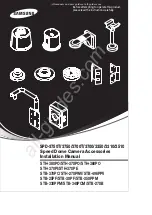
3
Warnings
• These sensors are for use only with Philips/Agilent/HP instruments.
Before using, verify that the combination of instrument/sensor is
specified in the instrument’s user documentation (e.g. Instructions for
Use); otherwise patient injury may result.
• Pulse oximetry measurements are statistically distributed. Two-thirds of
all pulse oximetry measurements can be expected to fall within the
stated accuracy (refer to
Specifications
later in this IFU for stated sensor
accuracy).
• Connect the sensor only to the SpO
2
connection or the SpO
2
adapter
cable of the oximeter.
• Do not reuse the sensor on a different patient until it has been
disinfected. The sensor can be reused on the same patient for the
patient’s entire stay.
• At elevated ambient temperatures, patient skin could be severely burned
after prolonged sensor application at sites that are not well perfused. To
prevent this condition, be sure to check patient application sites
frequently. All listed sensors operate without risk of exceeding 41
o
C on
the skin if the initial skin temperature does not exceed 35
o
C.
• Be sure to apply the sensor to the patient at the preferred or alternative
application site, while following application instructions provided later
in this document. Failure to do so can cause inaccurate measurements.
• To avoid venous pulsation, obstructed circulation, pressure marks,
pressure necrosis, artifacts and inaccurate measurements, make sure you
are using a sensor of the correct size and that the sensor is not too tight.
If the sensor is too tight, because the application site is too large or
becomes too large due to edema, the excessive pressure applied may
result in venous congestion distal from the application site, leading to
interstitial edema and tissue ischemia.
• If the sensor is applied too loosely it may fall off or compromise proper
alignment of sensor optics and result in inaccurate readings.






































